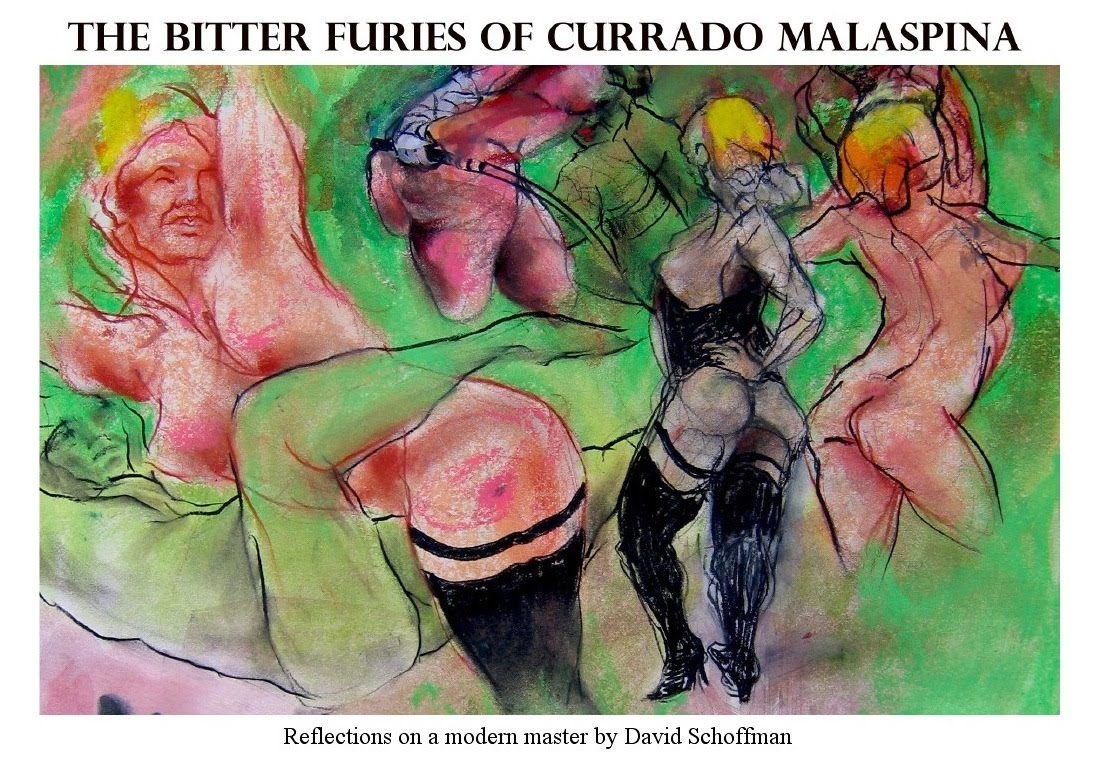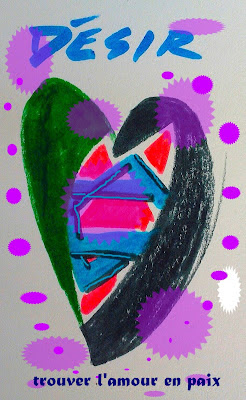My insane friend Currado Malaspina has taken on a new cause. In keeping with the French anti-clerical tradition he has taken it upon himself to militantly address the global religious community.
"Ca me fait chier," is how he put it to me in a recent phone call. "I've had it ...
aaa hijo puta de mierda capullo gilipollas imbecil ... I'm simply fed up!" (As some of you may already know, Currado can be fluently profane in about a dozen languages).
He recently published this open letter in the French weekly La Langue Inquiet. The clumsy translation is mine.
To whom it may so urgently concern,
Shut up! Faites taire! Siete zitto!
For once, try to be still and listen!
Had it ever occurred to you that you may be in error? (Who am I kidding? Of course not). Has it crossed your collective minds that maybe, just maybe, your understanding of the universe is to a certain degree flawed? Could it be conceivable that God has a somewhat different take on things than you do?
For instance, let's assume, just for fun, that there is a god (and by the way, how did such a half-baked notion such as monotheism gain such traction?) and that this god is all-knowing and all ... hell, I don't know ... all .... uhm ... merde!!! ... let's just say that he is really really nice and understanding, sort of like the math teacher you had in high school who wasn't married and who took a keen interest in you and made you feel special even though your other teachers thought you were a wise-ass. And this all-knowing, really really nice god watches over everything and loves everybody.
Tell me this, religious people: Why does he love some people more than others? Why does he play favorites and grants the French a 35 hour work week and a full month paid vacation each year but every so often he decides to flood the Ganges, the last time in 1998 where 1000 people were killed and over 30 million (yes, I said million!) were left homeless.
And what's up with all this gay bashing. Literally. As in "If a man also lie with mankind, as he lieth with a woman, both of them have committed an abomination: they shall surely be put to death; their blood shall be upon them." (Leviticus 20:13)
Oh, and can I get an apology for the Crusades, yes, all of them, I - IX, but with special emphasis on Number Two which was particularly brutal on the Jews of my native France.
Listen up religious people, nothing good has ever originated with faith.
The Ten Commandments you say?
Really!?
Like I need a document to tell me that killing is wrong? I think I figured that one out on my own. And how about the first, most famous commandment, "Do not have any gods before Me?" Hey god ... why so insecure? And #2, "Thou shalt not make any graven images?" As you know, I am Currado Malaspina, one of The Republic's most famous artists and for me Commandment number 2 is just plain BAD FOR BUSINESS!
And let's not even get into the Middle East, after all, if I say the wrong thing or for that matter even if I say the right thing but in the wrong way I may invite one of those lovely fatwas and frankly, I can't afford a bodyguard.
But while I'm in the neighborhood, explain to me how that wonderful epic poem known as the Old Testament doubles as a real estate document? Its like replacing your GPS with a copy of Homer's Odyssey!
And to my good friends across the ocean: de Tocqueville wouldn't recognize the place! The prideful ignorance of your religious right wing would be funny if not for its dire implications on the future health of our shared planet. How does a country which prides itself on its great colleges and universities produce political leaders with such contempt for science? Not since the days of Giordano Bruno has reason and empiricism been under such siege. I wish you luck, America.
Tell me this, religious people: Why does he love some people more than others? Why does he play favorites and grants the French a 35 hour work week and a full month paid vacation each year but every so often he decides to flood the Ganges, the last time in 1998 where 1000 people were killed and over 30 million (yes, I said million!) were left homeless.
And what's up with all this gay bashing. Literally. As in "If a man also lie with mankind, as he lieth with a woman, both of them have committed an abomination: they shall surely be put to death; their blood shall be upon them." (Leviticus 20:13)
Oh, and can I get an apology for the Crusades, yes, all of them, I - IX, but with special emphasis on Number Two which was particularly brutal on the Jews of my native France.
Listen up religious people, nothing good has ever originated with faith.
The Ten Commandments you say?
Really!?
Like I need a document to tell me that killing is wrong? I think I figured that one out on my own. And how about the first, most famous commandment, "Do not have any gods before Me?" Hey god ... why so insecure? And #2, "Thou shalt not make any graven images?" As you know, I am Currado Malaspina, one of The Republic's most famous artists and for me Commandment number 2 is just plain BAD FOR BUSINESS!
And let's not even get into the Middle East, after all, if I say the wrong thing or for that matter even if I say the right thing but in the wrong way I may invite one of those lovely fatwas and frankly, I can't afford a bodyguard.
But while I'm in the neighborhood, explain to me how that wonderful epic poem known as the Old Testament doubles as a real estate document? Its like replacing your GPS with a copy of Homer's Odyssey!
And to my good friends across the ocean: de Tocqueville wouldn't recognize the place! The prideful ignorance of your religious right wing would be funny if not for its dire implications on the future health of our shared planet. How does a country which prides itself on its great colleges and universities produce political leaders with such contempt for science? Not since the days of Giordano Bruno has reason and empiricism been under such siege. I wish you luck, America.
I was standing beside a soft spoken and frail Henri Matisse when the art historian Jack Flam asked him if he believed in god. "Yes" he answered, "when I work ... I sense myself helped immensely by someone who makes me do things that surpass myself."
Some people, when they speak to god, go out into the world strapped in a suicide vest.
Others do this.
Best regards,
Currado Malaspina
























.JPG)
.JPG)











